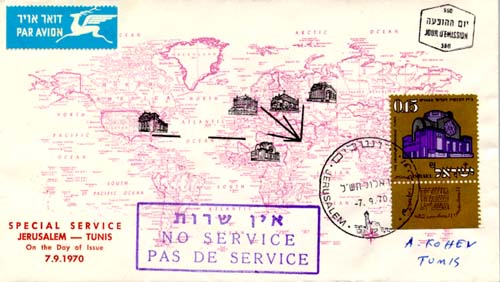
The present day Tunisia was part of Roman Africa. Under Roman rule, the province of Africa included many Jewish communities whose existence has been proved by numerous texts and archeological findings. The Arab conquest of this part of Africa began in 643 and was completed by 670. Jews were permitted to live under Arab jurisdiction upon payment of an annual poll tax. Around 800, a revolt took place which brought the Aghlabids to power. Under their rule and their successors, Jews enjoyed prosperity and significant intellectual activity until the invasions by the Almohads in the mid-11th century.
When the Almohads conquered Tunis, they gave the Jews the choice of death or conversion. Many Jews converted or fled. The Hafsids came to power in 1228, and the Jews who had been forced to convert were permitted to return to Judaism and live under relatively normal conditions. The Hafsids were succeeded by the Ottoman Turks. Beginning in the late 1600's, a large number of Jews from Leghorn, Italy, settled in Tunis where they were known as the "Grana" (from the Arab name for Leghorn) along with other foreign Jews. The relationship between the Grana and the "Touansa" (Jewish natives of Tunisia) where quite hostile.
The French Protectorate over Tunisia commenced in 1881, at which time the Jewish population was estimated at 50,000 to 100,000, depending on the source. Between November, 1942, and May 7, 1943, Tunisia was occupied by the Nazis. During this period, there were large scale roundups of Jews, some deportations, and substantial plunder of Jewish assets.
After Tunisian independence in 1956, the situation of the Jews deteriorated, particularly with the Six Day War. Between 1948 and 1970, over 40,000 Jews emigrated from Tunisia to Israel and nearly as many to France. In 1968, there were only about 6,000 to 7,000 Jews left in the country. It is estimated that today there are less than 1,500 Jews remaining.
In 1970, Israel issued five stamps commemorating five of the world's famous synagogues. The first day cover below features the Great Synagogue in Tunis. This synagogue was substantially damaged by a mob at the time of the Six Day War in 1967. Since Tunisia had no relations with Israel at the time, the cover was returned to the sender with the notation "no service".
Below is a postcard depicting the synagogue in Ben Gardane, which is a town in the south of Tunisia. Before 1948, a significant portion of the town's population was Jewish. As of 1982, there were still Jews living in the town.
Encyclopedia Judaica, CD-Rom Edition, Keter Publishing
http://www.geocities.com/Paris/Jardin/2471/
Copyright © 1998-2002 Edward Victor